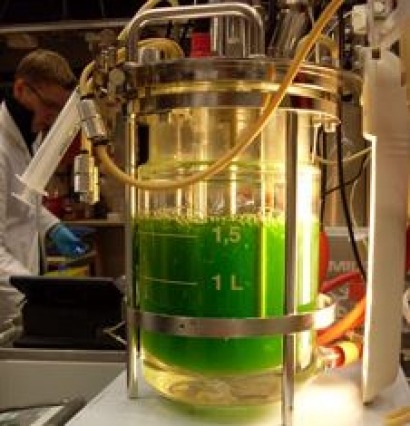
Algae are organisms useful in many ways in the transition towards a bio-economy. Even in a cool climate as in Finland, algae might be used to produce biochemicals and biofuels, besides use in capture of industrial carbon dioxide emissions.
But algae are not yet profitably cultivated for energy production purposes. The cultivation is challenging especially in cool climate where there is little daylight in winter.
Production is expensive compared with wood and agricultural biomass. But the findings of the ALGIDA project indicate that establishing profitable algae cultivation can also be possible in Finland.
The components of algae are suitable not only for producing biofuels but also pigments, cosmetics components or hydrogels. Algae are also used in the production of nutritional supplements, particularly omega-3. Algal biomass is suitable for biofertilisers.
“The most sensible thing to do in Finland is to integrate cultivation into industrial processes with spill heat and to integration into industrial processes with spill heat and focus development on the production of biofuels and biochemical compounds, and on nutrient removal from effluents. Algae can also be used to recover nutrients, organic impurities and heavy metals from waste and waste water,” says Principal Scientist Mona Arnold, the project manager at VTT.
Using algae to produce biofuels requires growing conditions where the algae produce high levels of lipids. The profitability of commercialisation depends on trends in oil prices. Economically sustainable production requires that all components of the algal biomass need are used. This is an internationally active area of research, and it is worthwhile for Finland to be involved. The aviation industry in particular is interested in the potential of algae-based biofuels.
The purpose of the ALGIDA project was to explore algae growth in waste waters in Finland and how the condition could be improved. Short daylight hours of winter are a problem, but algae are able to adapt to variable growing conditions. There are basically two options for a carbon source in algae cultivation: either carbon dioxide in the air and in industrial emissions, or organic waste. The project demonstrated the possibility of cultivating algae by using carbon dioxide source in the summer, when light is available and waste sugar in the winter.
Algae need warmth to grow. In the Finnish climate it makes sense to link algae cultivation to industrial operations where residual heat is available to heat algae cultivation ponds or reactors. Energy is also needed for harvesting and water extraction. In the SWEET programme, VTT and Kemira collaborated to develop chemical means for enhancing the harvesting and drying stage.
VTT is currently launching cooperation with the oil and gas company ONGC in India and with CLEEN Ltd. (Cluster for Clean Energy and Environment in Finland). The aim here is to demonstrate the capacity of algae in pilot scale to bind carbon dioxide from emissions from a natural gas refinery. This will reveal the potential of algae in a CO2 capture, best applications for algal biomass and how well algae could be grown in industrial waste water.
VTT coordinated the project "Algae from waste for combined biodiesel and biogas production" (ALGIDA) between 2010 and 2013. VTT collaborated with the University of Helsinki, the Finnish Environmental Institute, the HAMK University of Applied Sciences and the Lahti University of Applied Sciences.
Photo caption: Growing algae at VTT’s laboratory (source: VTT)
For additional information:

